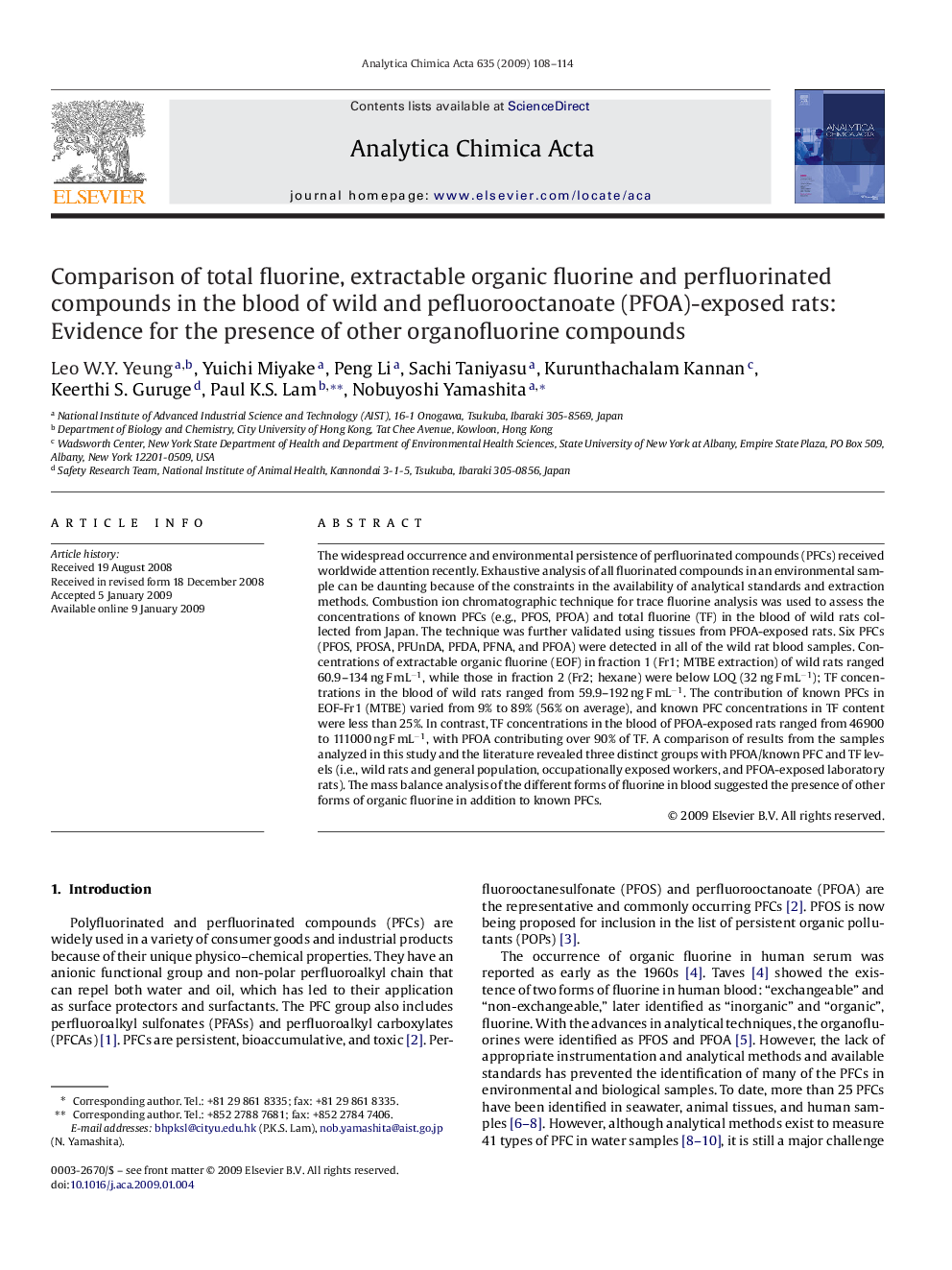| Article ID | Journal | Published Year | Pages | File Type |
|---|---|---|---|---|
| 1168774 | Analytica Chimica Acta | 2009 | 7 Pages |
The widespread occurrence and environmental persistence of perfluorinated compounds (PFCs) received worldwide attention recently. Exhaustive analysis of all fluorinated compounds in an environmental sample can be daunting because of the constraints in the availability of analytical standards and extraction methods. Combustion ion chromatographic technique for trace fluorine analysis was used to assess the concentrations of known PFCs (e.g., PFOS, PFOA) and total fluorine (TF) in the blood of wild rats collected from Japan. The technique was further validated using tissues from PFOA-exposed rats. Six PFCs (PFOS, PFOSA, PFUnDA, PFDA, PFNA, and PFOA) were detected in all of the wild rat blood samples. Concentrations of extractable organic fluorine (EOF) in fraction 1 (Fr1; MTBE extraction) of wild rats ranged 60.9–134 ng F mL−1, while those in fraction 2 (Fr2; hexane) were below LOQ (32 ng F mL−1); TF concentrations in the blood of wild rats ranged from 59.9–192 ng F mL−1. The contribution of known PFCs in EOF-Fr1 (MTBE) varied from 9% to 89% (56% on average), and known PFC concentrations in TF content were less than 25%. In contrast, TF concentrations in the blood of PFOA-exposed rats ranged from 46900 to 111000 ng F mL−1, with PFOA contributing over 90% of TF. A comparison of results from the samples analyzed in this study and the literature revealed three distinct groups with PFOA/known PFC and TF levels (i.e., wild rats and general population, occupationally exposed workers, and PFOA-exposed laboratory rats). The mass balance analysis of the different forms of fluorine in blood suggested the presence of other forms of organic fluorine in addition to known PFCs.
